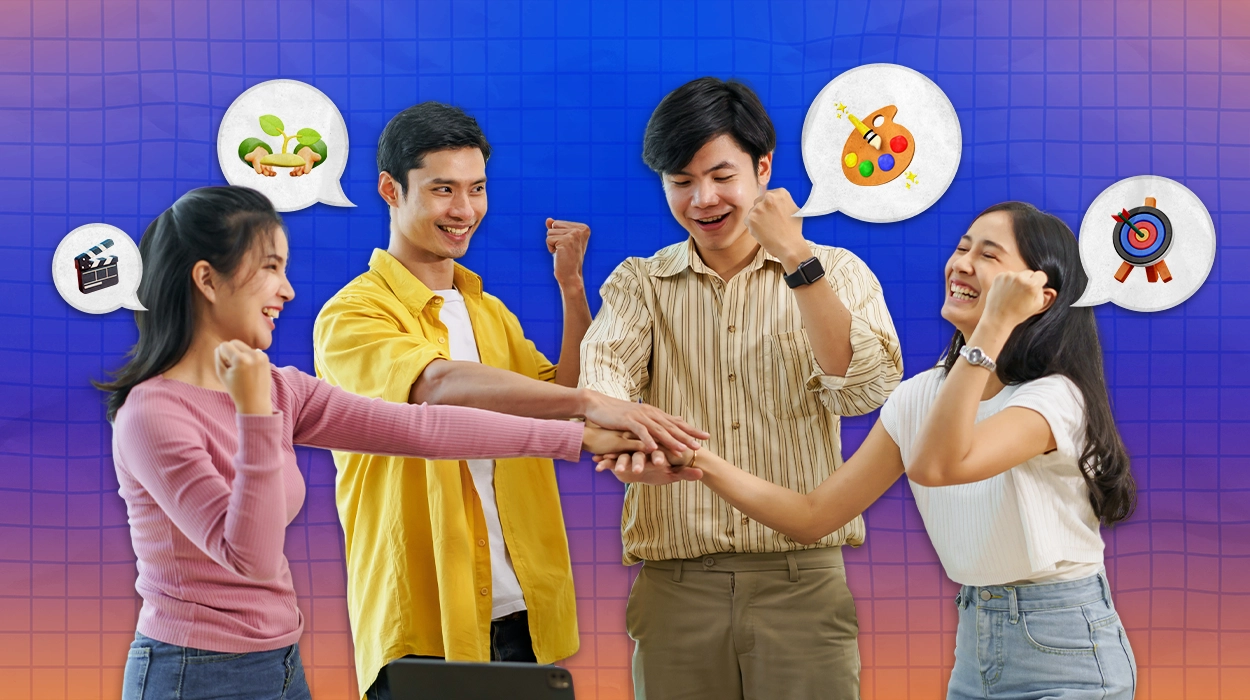Filipinos don’t wait for permission to help each other. We see a need, we fill it. A crisis hits, we mobilize. Someone’s struggling, we show up. It’s in our DNA, and the digital world has only made us stronger at it. This is modern bayanihan: the same spirit of community that lifted houses generations ago, now lifting lives through screens and smartphones.
We’ve always been the people who show up. The ones who cook extra rice for the neighbor, who collect money when someone’s in trouble. Technology didn’t change that but rather gave us more ways to reach each other, faster and farther than ever before.
10 Ways Modern Bayanihan Manifests Online:
- Crisis Response and Disaster Relief
- Community Resource Sharing
- Digital Entertainment for Social Good
- Digital Financial Inclusion and Mutual Aid
- Crowdfunding and Entrepreneurial Support
- Digital Labor Support Networks
- Mental Health and Wellness Support
- Civic Engagement and Anti-Corruption Advocacy
- Educational Support and Skill Development
- Technology Innovation for Community Resilience
Whether it’s disaster relief or viral fundraisers, Filipinos prove daily that our spirit of community is thriving online. Here’s how modern bayanihan shows up in our digital world.
1. Crisis Response and Disaster Relief
When disaster strikes, we don’t wait for permission to help. We just do it.
Social media becomes our emergency operations center. Information spreads faster than official channels. Needs get matched with resources in real time. It’s chaotic, it’s organic, and somehow it works because we make it work.
The Angat Buhay Volunteer Network, led by former Vice President Leni Robredo, has mastered the art of digital coordination. Education programs, healthcare initiatives, and crisis response are all organized through online platforms that connect thousands of volunteers nationwide.
Then there’s MapaKalamidad.ph, a crowdsourced disaster reporting platform that lets regular citizens become first responders. You can report a flooded road, flag a landslide risk, and alert your community to dangers. It’s bayanihan meeting technology to keep communities safe.
Organizations like the Philippine Red Cross and Philippine Disaster Resilience Foundation have gone fully digital too, deploying aid and coordinating volunteers with speed that would’ve been impossible just a decade ago.
This is what we do best. We turn crisis into collective action, one share and one click at a time.
ALSO READ: 10 Worst Typhoons that Went Down in Philippine History
2. Community Resource Sharing
Remember when Ana Patricia Non set up that bamboo cart on Maginhawa Street? “Magbigay ayon sa kakayahan, kumuha batay sa pangangailangan.” Give what you can, take what you need.
That simple idea powered by a Facebook post became a nationwide movement within days.
Ana Patricia Non, a 26-year-old urban poor activist, probably didn’t expect her community pantry to spark thousands of similar initiatives across the country. But that’s the thing about bayanihan is it’s contagious. One person starts, and suddenly everyone wants in.
The “Saan May Community Pantry?” mapping team jumped in to help, creating digital tools so people could find pantries near them. Google Maps met grassroots organizing, and the result was beautiful—technology amplifying the Filipino instinct to help.
No paperwork, means testing, and shame, just neighbors helping neighbors, coordinated through smartphones and sustained by that unshakeable Filipino belief that we’re all in this together.
3. Digital Entertainment for Social Good
Who says entertainment can’t change lives? Filipino artists and content creators have turned their platforms into fundraising powerhouses, proving that talent plus heart equals impact.
Bayanihan Musikahan, organized by National Artist, Ryan Cayabyab, raised P42 million through online concerts during the pandemic. OPM royalty like Lea Salonga, Martin Nievera, and Morissette came together to perform from their homes, and millions of Filipinos tuned in and donated.
The Creator and Influencer Council of the Philippines launched #CreatorsUnitedPH, bringing together heavy hitters like Erwan Heussaff, Mikey Bustos, and Ranz and Niana Guerrero. Their mission is to raise funds for medical-grade PPE when frontliners were running out of protection.
Even gaming streamers turned their live streams into fundraising events. Filipino gamers on Facebook Gaming and Twitch regularly host charity streams, turning their love for games into lifelines for disaster victims and medical patients.
Entertainment has become fuel for hope, delivered with world-class talent and pure Filipino heart..
4. Digital Financial Inclusion and Mutual Aid
Sending help used to be complicated with Western Union lines, bank transfers that took days, and the awkwardness of handing over cash.
GCash’s GBayanihan platform changed the game by connecting donors directly with verified NGOs during disasters. ABS-CBN Foundation, Ayala Foundation, and UNICEF are all just a few taps away. The process is transparent, efficient, and instant.
Maya (formerly PayMaya) took it even further during COVID-19, partnering with government agencies to disburse 1.4 billion pesos to 120,000 citizens. This represents digital survival, making sure help reaches people who need it most.
ALSO READ: Maya vs. GCash | Which has the BEST FinTech Video Campaigns in 2025?
Money isn’t everything, but when it’s the difference between eating or going hungry, between buying medicine or suffering, it matters. Filipinos have figured out how to move that money fast, transparently, and directly to where it counts.
5. Crowdfunding and Entrepreneurial Support
Every entrepreneur needs a village. In the digital age, that village has WiFi and a funding platform.
The Spark Project, founded by Patch Dulay, became the Philippines’ answer to Kickstarter. It’s where creative Filipinos turn ideas into reality with help from the community. Pure bayanihan for the startup generation.
ANTHILL (Alternative Nest and Trading Hub for Indigenous or Ingenious Little Livelihood seekers) takes it to another level, supporting Filipino artisans through crowdfunding. They partner with The Spark Project for “Bayanihan campaigns” that connect traditional craftspeople with global markets.
Think about that. A weaver in Mindanao getting funded by someone in Manila, Chicago, or Dubai. Technology didn’t just connect them; it preserved culture, sustained livelihoods, and proved that our old ways and new ways can work beautifully together.
6. Digital Labor Support Networks
Freelancing can feel lonely and the gig economy can be brutal, but Filipino digital workers aren’t facing it alone. They’re building support systems that would make our ancestors proud.
Digital labor influencers on YouTube and Facebook coach fellow workers, sharing tips on navigating platforms, landing clients, and avoiding scams. They call it “digital labor bayanihan,” passing down knowledge the same way master craftspeople once trained apprentices.
Professional networking groups on Facebook and LinkedIn have become modern versions of traditional mutual aid societies. The community shares job leads and circulates opportunities freely. Someone’s always got a cousin who knows someone who’s hiring.
It’s bayanihan adapted for the work-from-home era, proving that even when we’re working alone in our rooms, we’re still part of something bigger.
7. Mental Health and Wellness Support
We’re finally talking about mental health, and the digital world is making those conversations louder, safer, and more accessible.
In Touch Community Services brought counseling online, offering subsidized mental wellness support through digital platforms. Suddenly, seeking help doesn’t require explaining to your parents why you need to see a psychologist. You can just open your laptop.
Kasamahan Collective dives even deeper, creating content about Filipino mental health experiences, tackling topics like internalized oppression and intergenerational trauma through podcasts and online media.
Bayanihan isn’t just about physical needs. It’s about lifting each other up emotionally, breaking stigmas together, and making sure nobody suffers in silence.
8. Civic Engagement and Anti-Corruption Advocacy
Filipino creators aren’t just making content but making noise that holds power accountable.
Content Creators Against Corruption, led by Carlo Ople, represents a coalition of influencers using their platforms to expose wrongdoing, support whistleblowers, and demand transparency in government spending.
This is bayanihan as resistance, as accountability, and as a collective refusal to accept “that’s just how things are.” When one person speaks up, thousands amplify the message. When someone needs protection, the community becomes their shield.
It’s not always comfortable and sometimes risky. But it’s proof that the same spirit that builds houses together can also tear down corruption, one exposed scandal at a time.
9. Educational Support and Skill Development
Education is supposed to be the great equalizer, but let’s be honest. Access has never been equal. Until Filipinos decided to change that, one shared resource at a time.
Programs like the U.S. Embassy YSEALI Workshop empower Filipino creators like Abi Marquez (the “Lumpia Queen”) to use their platforms for community advocacy and education, turning influencers into educators and role models.
Teacher-influencer communities on social media became lifesavers during the shift to online learning. Lesson plans, teaching tips, and tech troubleshooting are all shared freely because teachers understand that helping one classroom helps them all.
This is what democratized learning looks like in the Filipino context. Not because some corporation decided to be generous, but because regular people decided nobody’s getting left behind on their watch.
10. Technology Innovation for Community Resilience
Filipino innovation isn’t just about building the next big app. It’s about building solutions that keep communities safe.
Cristina Macaraig, founder of the Alerto PH app, developed IoT and AI-powered systems that automatically alert emergency responders and local government units about dangers. The system provides flood detection, earthquake warnings, and real-time hazard alerts.
Project NOAH (Nationwide Operational Assessment of Hazards), led by Dr. Mahar Lagmay at the University of the Philippines, represents the Philippines’ flagship disaster risk reduction program. Launched in 2012 as a response to Tropical Storm Sendong, Project NOAH provides 6-hour lead-time warnings for floods, landslides, and storm surges through advanced Doppler radars, automated weather stations, and LiDAR mapping. The platform has served over 3 million users and recorded 1.1 million active users in 2024 alone, with usage spikes reaching 623,000 users during Typhoon Carina, the highest in the platform’s history.
This is bayanihan coded into software, designed to save lives before disasters become tragedies. It’s proof that Filipino tech talent isn’t just world-class. It’s community-focused, using innovation not for profit alone but for protection.
When technology serves the people first, that’s when it becomes truly powerful. That’s when it becomes truly Filipino.
FAQs: Modern Bayanihan in the Filipino Digital World
What is digital bayanihan?
Digital bayanihan is the Filipino tradition of communal unity and mutual aid expressed through online platforms. It uses social media, digital payments, and technology to coordinate community support while maintaining the same spirit of helping each other that defines traditional bayanihan.
How can I help with digital bayanihan?
Follow organizations like Angat Buhay or Philippine Red Cross on social media, donate through GCash GBayanihan or Maya, share legitimate fundraising appeals, join community Facebook groups, volunteer your skills online, or support Filipino content creators doing advocacy work.
Are online fundraisers safe?
Many are legitimate, but always verify first. Use trusted platforms like GCash GBayanihan that partner with verified NGOs, check for official social media verification, read donor comments, and look for transparent updates. When unsure, donate through established organizations.
Why did community pantries go viral?
Ana Patricia Non’s Maginhawa Community Pantry went viral because it was simple—”Give what you can, take what you need”—required no paperwork, and spread quickly through Facebook. The concept tapped into Filipino mutual aid values, and digital mapping tools helped hundreds of pantries launch nationwide within days.
How does digital bayanihan help during disasters?
Digital bayanihan enables real-time disaster response through platforms like MapaKalamidad.ph for hazard reporting, social media for coordinating relief efforts, GCash for instant donations, and crowdsourced information to identify urgent needs. It has raised millions and mobilized thousands of volunteers during typhoons and COVID-19.
How do content creators practice bayanihan?
Filipino creators organize fundraising campaigns, host charity streams and concerts, promote small businesses, advocate for civic issues, normalize mental health conversations, and amplify emergency calls for help. Campaigns like #CreatorsUnitedPH and Bayanihan Musikahan have raised millions for frontliners and disaster relief.
Does digital volunteering make a real impact?
Yes. Digital volunteers provide online tutoring, create educational resources, verify disaster information, offer mental health counseling, develop community technology solutions, translate important information, and coordinate relief efforts. Their skilled work saves organizations money while strengthening communities.FAQs: Understanding Modern Bayanihan in the Digital World
Modern bayanihan shows how Filipino values of community and mutual aid thrive online. From disaster relief to mental health support, Filipinos use digital platforms to help each other in powerful new ways. Here are answers to common questions about this digital transformation of our cultural spirit.
What is modern bayanihan?
Modern bayanihan is the Filipino tradition of communal unity and mutual aid now expressed through digital platforms. It maintains the same spirit of helping each other while using social media, digital payments, and online tools to coordinate community support.
How does modern bayanihan manifest online?
Modern bayanihan shows up through crisis response platforms like MapaKalamidad.ph and Angat Buhay, community resource sharing via digital pantry maps, online fundraising concerts like Bayanihan Musikahan, digital payment systems like GCash GBayanihan and Maya, crowdfunding platforms like The Spark Project, mental health support through services like In Touch Community Services, and civic engagement through creator coalitions.
What are examples of digital bayanihan during disasters?
During disasters, Filipinos use MapaKalamidad.ph for real-time hazard reporting, social media to coordinate relief efforts, and GCash for instant donations. Organizations like Philippine Red Cross and Philippine Disaster Resilience Foundation deploy aid digitally. Project NOAH provides 6-hour flood warnings and served 623,000 users during Typhoon Carina.
How did community pantries become a digital movement?
Ana Patricia Non started the Maginhawa Community Pantry with a simple principle: “Give what you can, take what you need.” Her Facebook post sparked a nationwide movement. The “Saan May Community Pantry?” mapping team created digital tools that helped hundreds of pantries launch across the Philippines within days.
Who are key people leading digital bayanihan?
Key figures include Ana Patricia Non (community pantries), former VP Leni Robredo (Angat Buhay), Ryan Cayabyab (Bayanihan Musikahan), Carlo Ople (Content Creators Against Corruption), Patch Dulay (The Spark Project), Cristina Macaraig (Alerto PH app), Dr. Mahar Lagmay (Project NOAH), and content creators like Abi Marquez, and members of the Creator and Influencer Council of the Philippines.
How do Filipino content creators practice bayanihan?
Filipino creators organize fundraising campaigns like #CreatorsUnitedPH which raised funds for PPE, host online concerts like Bayanihan Musikahan that raised P42 million, turn gaming streams into charity events, promote local businesses, advocate for anti-corruption through platforms like Content Creators Against Corruption, and normalize mental health discussions.
What digital platforms enable financial bayanihan?
GCash GBayanihan connects donors with verified NGOs like ABS-CBN Foundation, Ayala Foundation, and UNICEF. Maya partnered with government agencies to disburse 1.4 billion pesos to 120,000 citizens during COVID-19. These platforms make donations transparent, efficient, and instant.
How does technology support Filipino innovation for community safety?
Cristina Macaraig’s Alerto PH app uses IoT and AI to alert emergency responders about floods, earthquakes, and hazards. Project NOAH, led by Dr. Mahar Lagmay, provides 6-hour warnings for disasters using Doppler radars and LiDAR mapping, serving over 3 million users with 1.1 million active users in 2024.



